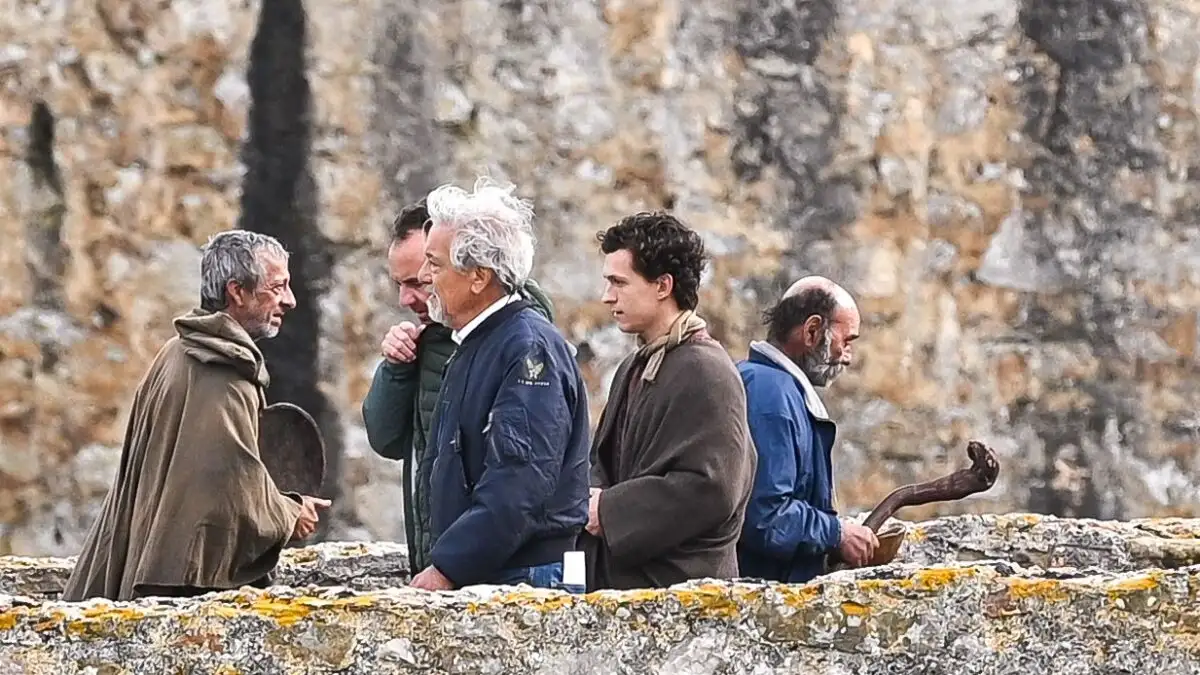Archaeologists in the Milas district of Mugla province are working diligently to restore the 1,860-year-old Temple of Zeus Lepsynos, a once grand sanctuary that has suffered considerable structural damage over the centuries. Located in Selimiye, the temple dates back to the second century B.C. and is considered one of the best-preserved ancient sites in Türkiye.
Associate Professor Abuzer Kizil, the head of the Euromos excavation team from Mugla Sitki Kocman University’s archaeology department, highlighted the significance of the ongoing restoration project.
“The project has gained momentum under the ‘Heritage for the Future’ initiative. We have cataloged and documented nearly a thousand architectural blocks, laying the foundation for a meticulous restoration process,” Kizil explained.
An aerial view shows the columns of the Temple of Zeus Lepsynos in Milas, Mugla, Türkiye, being restored and made earthquake-resistant on March 26, 2025. (AA Photo)
North Columns Dismantled to Prevent Collapse
Kizil elaborated on the steps taken to ensure the safety of the temple during the restoration. Years of erosion and structural shifts had caused parts of the temple to become unstable. “In previous years, partial restoration work had been carried out. However, this year, we took a critical step by dismantling all the northern columns, which were leaning dangerously. A strong earthquake could have led to their collapse, causing irreversible damage,” he said.
The restoration team is carefully repairing and reinforcing damaged pieces before reassembling them in their original locations. “We are rebuilding the temple from its foundation to its roof. Our priority is to re-erect the northern façade first, ensuring its stability,” Kizil added.
A view of the Temple of Zeus Lepsynos in Milas, Mugla, Turkiye, being restored and made earthquake-resistant, March 26, 2025. (AA Photo)
Restoration Set to Continue Until 2028
As part of the “Heritage for the Future” initiative, the team aims to restore the remaining facades of the temple. “Our goal is to connect three sides of the temple structurally to enhance its earthquake resistance. We are following ancient construction techniques to maintain historical authenticity,” Kizil noted.
In addition to the temple, excavation and restoration efforts will also focus on other significant structures in Euromos, such as the theater, agora, and bath complex. “The restoration is expected to continue until 2028. Alongside the structural work, we will conduct excavations around the temple. Although the sanctuary dates from the Roman period, there are also layers from the Hellenistic and Archaic periods, which may provide valuable new archaeological insights,” Kizil explained.
Ongoing Excavations and Future Prospects
Excavations at Euromos are ongoing throughout the year, with experts from various archaeological disciplines involved, including geophysical surveys, mapping, and structural analysis. Once restored, the Temple of Zeus Lepsynos is expected to regain its former splendor, offering visitors a chance to experience the grandeur of Türkiye’s ancient heritage.
An aerial view shows the columns of the Temple of Zeus Lepsynos in Milas, Mugla, Türkiye, being restored and made earthquake-resistant on March 26, 2025. (AA Photo)









